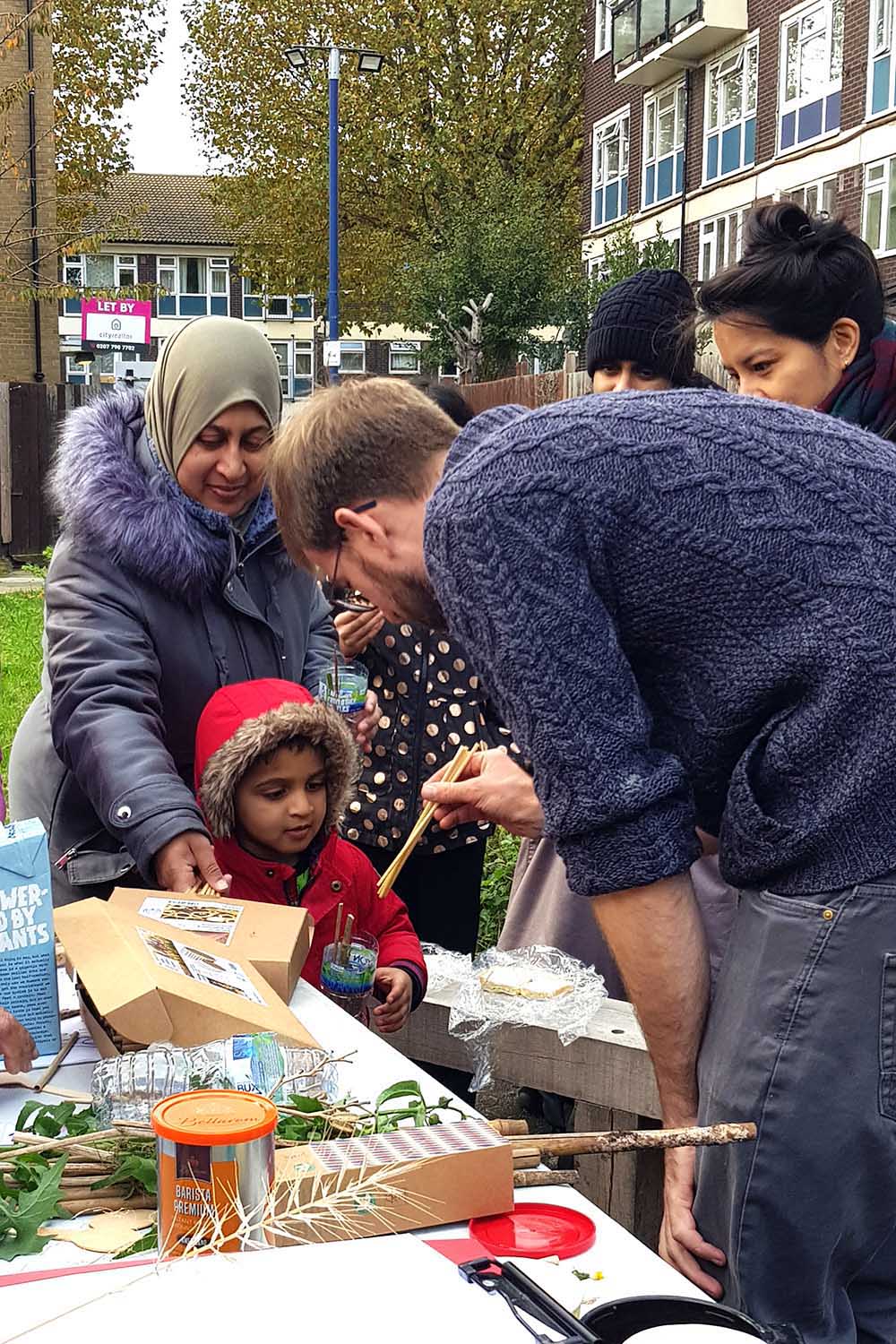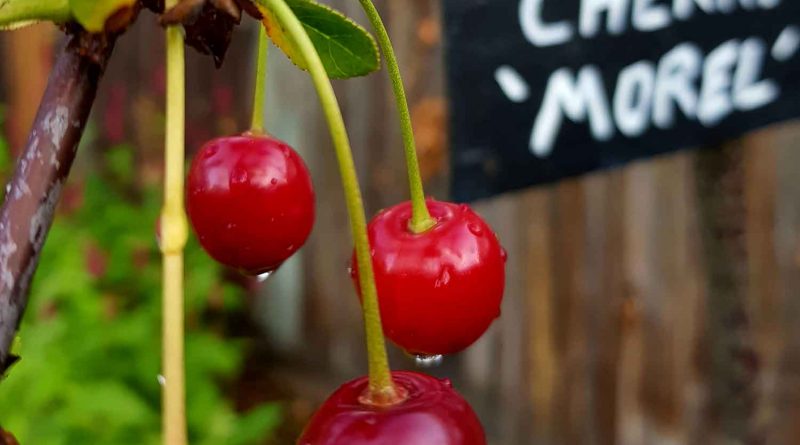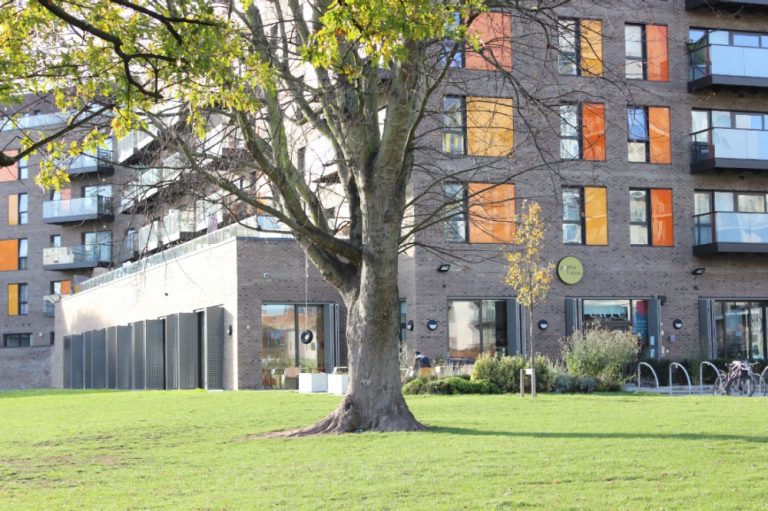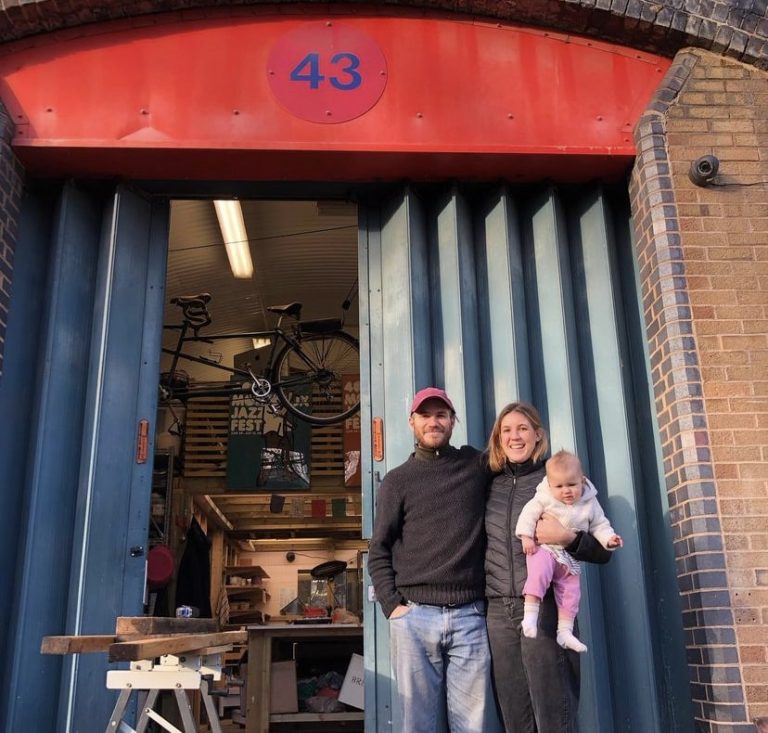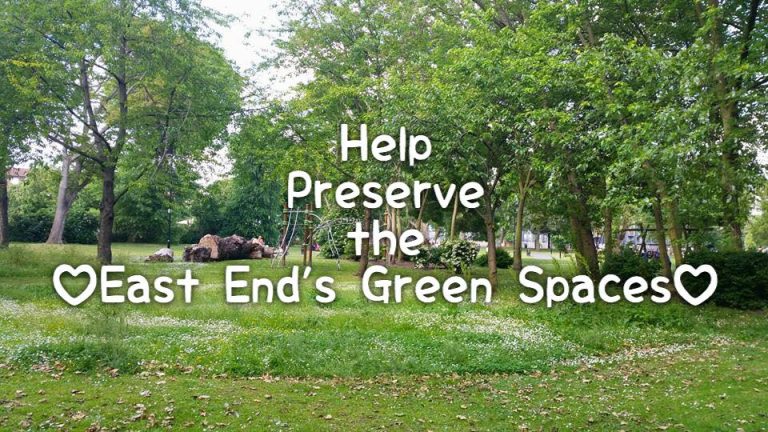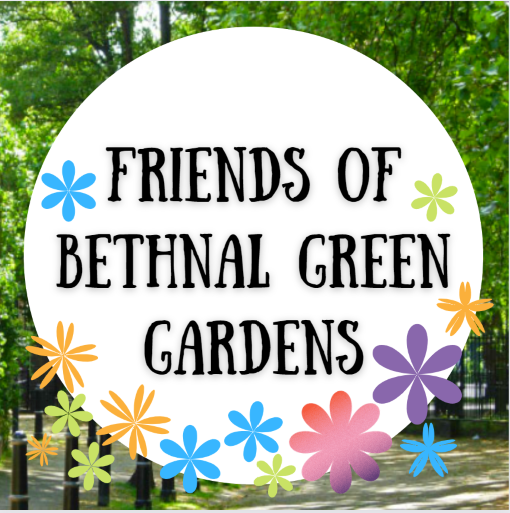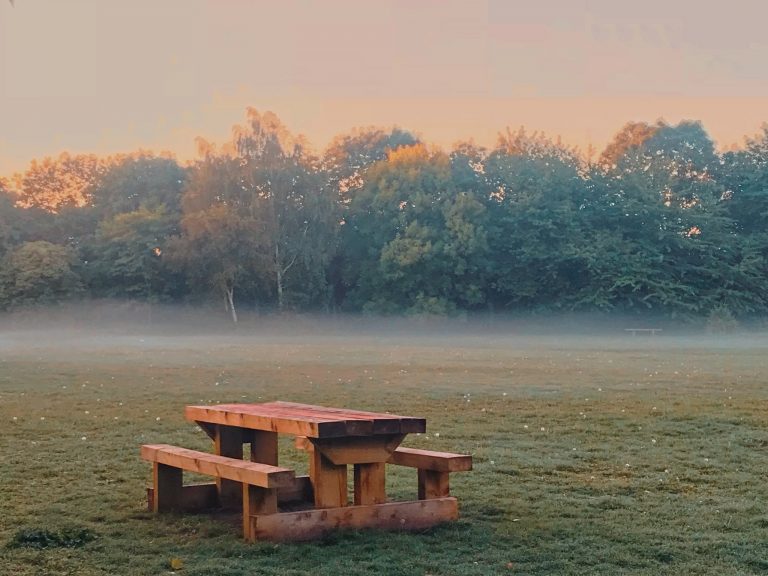Ambrose Walk Community Garden: how one estate in Bow transformed their landscape into a perfect pocket park
Inspired by the produce and cultural heritage of the local community, Ambrose Walk courtyard in Bow has been transformed from derelict tarmac into a blooming green space.
Even on a quiet autumn Sunday, the Ambrose Walk Community Garden is buzzing with life. From busy insects and birds flying around, to squirrels looking for food, the garden houses a great variety of plants, shrubs, and fruit trees which have brought colour, mere metres from Bow Road’s clamorous cars, buses and vans.
Turning left after Bow Road station down Addington Road, it is just a couple of minutes walk to Ambrose Walk block of flats, part of the 1960s built Malmesbury Estate. Behind the concrete on the right, the community garden is enclosed within three blocks of flat, concealed from passersby but worth the search.
The story behind the creation of this green space is one of a community that came together and fought to improve its neighbourhood and biodiversity.
James Clark, 34, has been a resident of Malmesbury Estate for four years and one of the founders of the Malmesbury Residents Association in 2018 and of Wilder Communities in 2019, a local charity with a green focus. He has been a key figure in setting up the community garden.
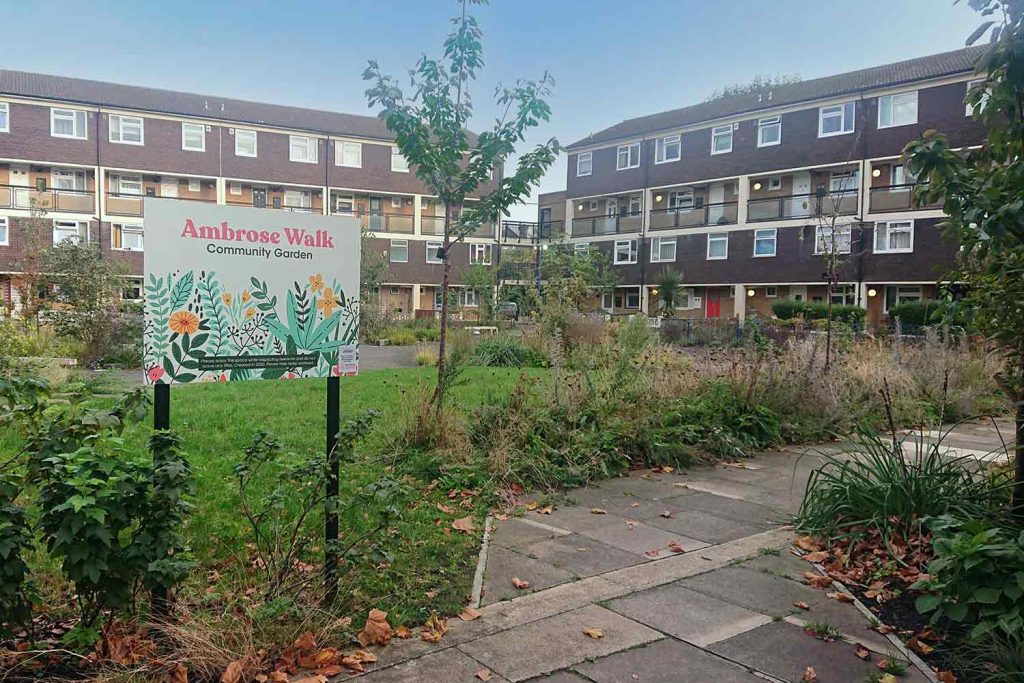
‘This all happened thanks to the people deciding to get out and do something. It’s entirely community-generated, with a light partnership with the local authorities,’ says Clark.
‘There was a clear expression from many residents that the estate was neglected and out of sight of the authorities and not enough investment had come in. There wasn’t enough for the community to do on the estate or green spaces for children,’ Clark adds.
After the residents re-landscaped some of the sites on the estate in 2018, they decided to start a much bigger project to transform Ambrose Walk. Its central courtyard was an abandoned plain tarmac surface, surrounded by railings: one of ‘the worst spaces in the estate’, Clark says.
The initial project, funded with £29,000 grants from VEOLIA, the waste management company, and Tower Hamlets Homes, ran for twelve months. It concluded in March 2020, immediately before lockdown, when they managed to plant thousands of plants.
‘We did that through the community, the only professional involvement was digging up the tarmac. It was entirely planted by the community,’ Clark says.
‘It’s very much a matter of the community coming up with ideas, raising funding, and trying to engage with the authorities to get them on board and support. There is support by the council and Tower Hamlets Home on what we are doing, but there is a degree of caution. It’s been a challenge, but we were ultimately successful to engage with these authorities and get them behind to what we are doing,’ a satisfied Clark adds.
Taking inspiration from the products sold in local shops and residents’ suggestions, the garden hosts a wide variety of edible plants, from chives, mint, berry to walnut, apricot, cherry trees and more.
‘The general theme of Ambrose Walk Community Garden was edible planting. The inspiration for that was that there is a quite large Bangladeshi community on the estate that originates from agricultural provinces in Bangladesh. A lot of the older women are proactive in terms of vegetable growing. That was an inspiration,’ Clark says.
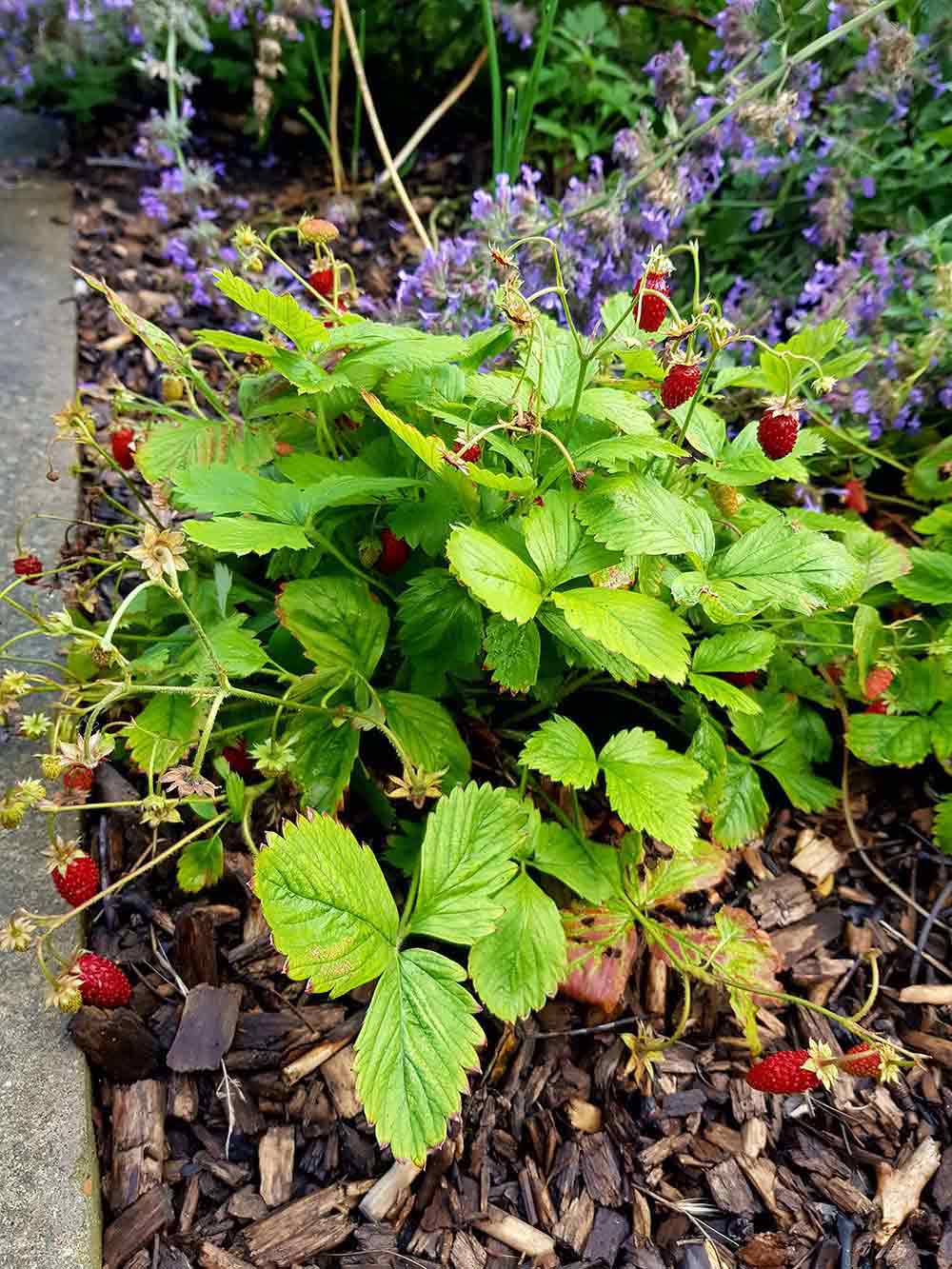
The space has been greatly valued during lockdown, which saw residents enjoy the view sitting on the new benches, children playing through the new paths, and residents picking fruit from trees and plants. It has also led to greater interaction between residents, much needed after the prolonged period of isolation.
Uzma Ravat, 28, moved to the estate about a year ago and has been active in the garden for six months helping maintain the space, and is delighted to be part of the growing community.
‘It’s really nice living over it and being able to just come down and interact with nature in quite a tactile way. Especially during lockdown, it was such a pleasure to see a green space being developed,’ she says.
‘After the pandemic and lockdown, everyone is so much more conscious of their local outdoor and green spaces.’
Ravat also helps during workshops and remembers one particularly: ‘We had a workshop where we labelled plants and it was so nice to just be able to walk around and identify the plants.’
Since life started slowly going back to normality from the summer of 2021, monthly gardening community meet-ups have been organised, with a focus on maintaining the plants that had been established the previous year.
Tom Bradford, 36, co-founder of Wilder Communities and active in the creation of the space, says: ‘We have taken ownership of the space, opened up the concrete and allowed plant life to pour out into the landscape. We manage to support over 100 different species of plants in a small space.’

‘Unlike most community gardens that install raised beds that require a tremendous amount of work to keep them watered and fertilised, we have excavated the existing concrete and tarmac and planted a wide range of fruit trees, shrubs, herbs, grasses, perennial flowers, and meadow that can support themselves and either tolerate intensive maintenance regimes or years of neglect,’ Bradford explains.
Many of the plants have been taken from cuttings and the garden has no maintenance budget but survives solely on donations collected during planting community days and volunteers. The Co-Op by Bow Road DLR Station has also provided free food and snacks for planting events. Nonetheless, the project is continuously expanding, adding plants that give colour to the space all year round.
The plan is to extend this successful project to other green areas of the estate. Wilder Communities partnered with Trees for Cities, a charity set to improve lives by planting trees in cities, to run a bulb, meadow, and tree planting project to be completed in March 2022.
It is uplifting to watch such a diverse community coming together to improve their surroundings and positively contribute to the biodiversity of our city. In times of crisis, this has set an example of the humanity of people and the changes communities can bring when partnering together.
As this is a space entirely managed by the community, people are encouraged to join as volunteers or go and share knowledge in order to bring similar changes where they live. Readers can contact James Clark and Tom Bradford on hello@wildercommunities.com.
If you enjoyed this article, then take a look at our article on the wildlife haven at Globe Town’s Canal Club Community Garden.
